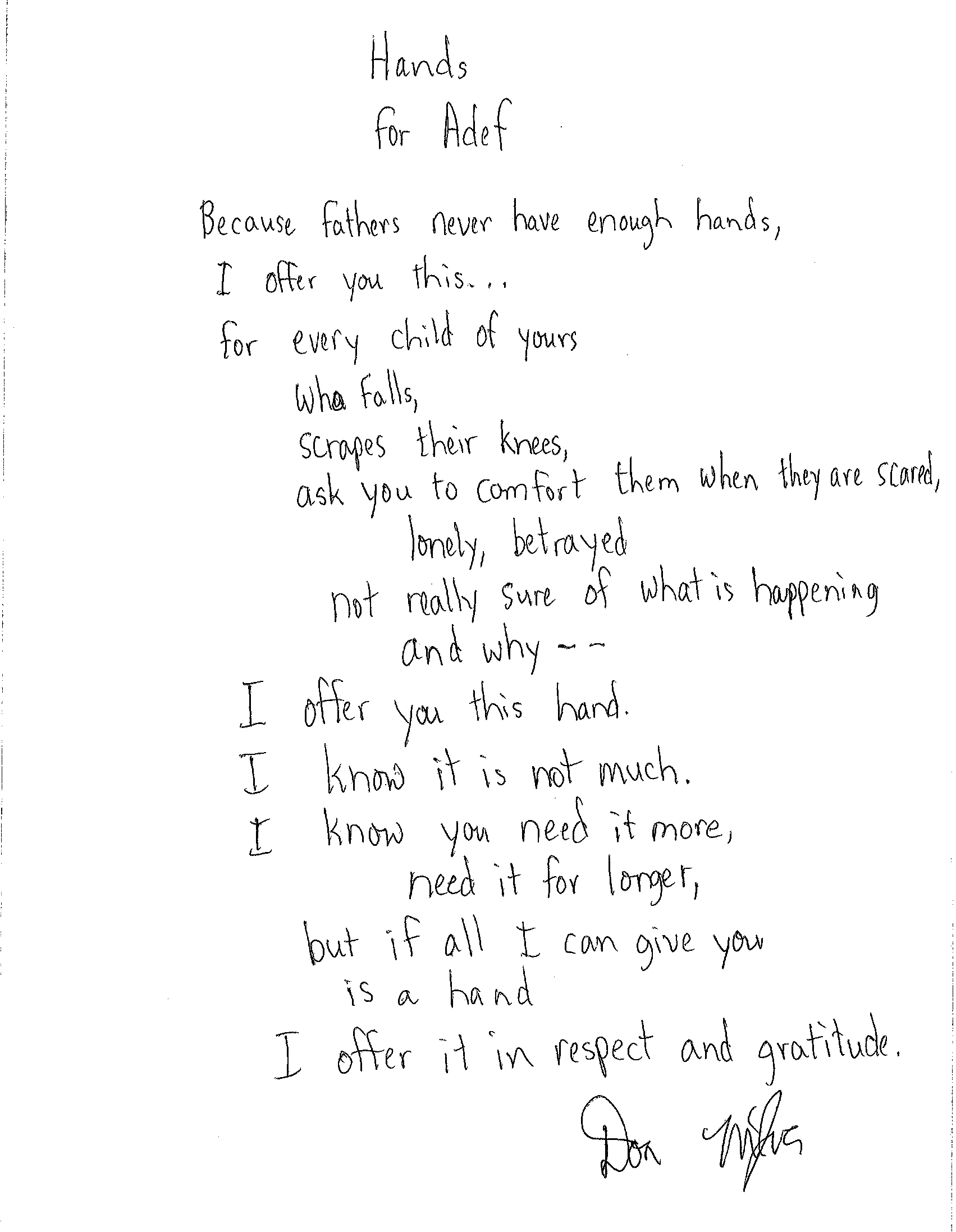Laying Down the Bones Chicago: January 2011 Guest Post by Ames Hawkins: Associate Professor of English, Columbia College Chicago
In order to reach its goal, One Million Bones needs to collect an average of one thousand bones a day for the next three years. When stated so simply, the goal may seem impossible. How can we possibly accomplish this goal? How can we make it happen? I don’t know the specific answer to these questions, but I do know that teaching a college course on art activism is what has convinced me that the impossible can be possible when we work together, when we collaborate.
My relationship with art activism began in 2007, when I learned about the art activism project, The Cradle Project. At that time, my friend and colleague Joan Giroux (Department of Art and Design) and I collaborated on the creation of a course titled Art Activism Studio Project. The goal of the course was to provide students with a specific opportunity to engage with the theory and practice of art activism, to experience for themselves the intersection between political consciousness and artistic process.
Last year and this year—and next year as well!!—Joan and I have made One Million Bones our focus for this course. This year the course accepted the invitation by One Million Bones to focus on creating our own “Laying Down the Bones” performance. On January 14, 2011, about fifty people attended our rendition of “Laying Down the Bones,” one that was choreographed, produced and executed by a class of fourteen students from Columbia College Chicago.
A primary focus of this course—a tenant of art activism in general—is the importance of collaboration. Students were asked to collaborate with each other; they were invited to understand that they were and are collaborating with all the other poets, performers and artists involved in past and future “Laying Down the Bones” performances, in One Million Bones overall.
Students in the class were organized into three working groups: PR, Event/Documentation and Performance. The PR group was responsible for PR and created and distributed a poster, created a Facebook event and submitted press releases. The Event/Documentation group set a schedule, organized the purchase of food, set up the bone-making station and communicated with the videographer. The Performance group created a vision for the performance and ran rehearsals for the entire class.
The Performance Group Report describes some of the essential elements of the staging that focused on choreographed movement and the holding of ceramic bones as students read aloud creative prose that was inspired by survivor stories, genocide research and art activism theory:
When our audience entered, they took a bone. Passing out a bone to each audience member was our way of putting the issue of genocide in his or her lap. Holding onto a physical object while being moved by the creative pieces was an effective means to communicate the severity of the issue. The sense of holding on to something physical and then adding it to the pile on stage, gave a connection between the bone and the person. After the heavier pieces of creative nonfiction were performed which emphasized mourning, the audience was invited to participate in a ceremony to place their bones upon the monument, to let go of them. After discussing hope, the future and a proposal for action, audience members were finally invited to make a bone, and to give it to a cause larger than them.
Row by row, the procession of the bones was initially for the audience members to get a tangible feel of moving forward, and of honoring the past, saying goodbye. After the procession of laying the bones to rest, we picked back up with creative works about hope and how to move forward after devastation. We didn’t want to skip over the memorial aspect of genocide even though the One Million Bones project is hoping to focus largely on an idea of hope and moving forward. We wanted to touch hearts, and provide a window into a world that is very far away from people, but propose that the view of that window can change, and that you, the audience member, has the power to help change it.
Producing “Laying Down the Bones: Chicago” was an amazing feat given that in addition to executing the event itself, students read over three hundred pages of academic and lyrical prose on the larger subjects of art activism and genocide, collectively wrote nearly two hundred pages of synthesis and reflection, created over 550 bones, and raised hundreds of dollars. The class itself was only nine days long.
Over the next few months, this blog will feature the words of these students, the creative pieces each of them read as emotional and political offerings to the larger cause to end genocide.
As soon as one is ready, we will post a brief video that documents our particular version of “Laying Down the Bones.” In 2012, Joan and I will repeat this course for the third time and connect it to a larger campus-wide bone-making drive at Columbia College Chicago in the Spring of 2012.
If you have any questions about how to get your classes/campus involved with One Million Bones, if you want to be a part of making the impossible possible, please do not hesitate to contact me: ahawkins@colum.edu.
Special thanks to The Ellen Stone Belic Institute for the Study of Women and Gender in the Arts and Media for enabling Naomi Natale to be in attendance at our event, and Critical Encounters: Image and Imagination Mini-Grant Funding which allowed us to purchase clay and food for our event: (http://www.colum.edu/Academics/Institute_for_the_Study_of_Women_and_Gender_in_the_Arts_and_Media)
http://www.colum.edu/criticalencounters/
 Friday, March 11, 2011 at 1:13PM
Friday, March 11, 2011 at 1:13PM 
